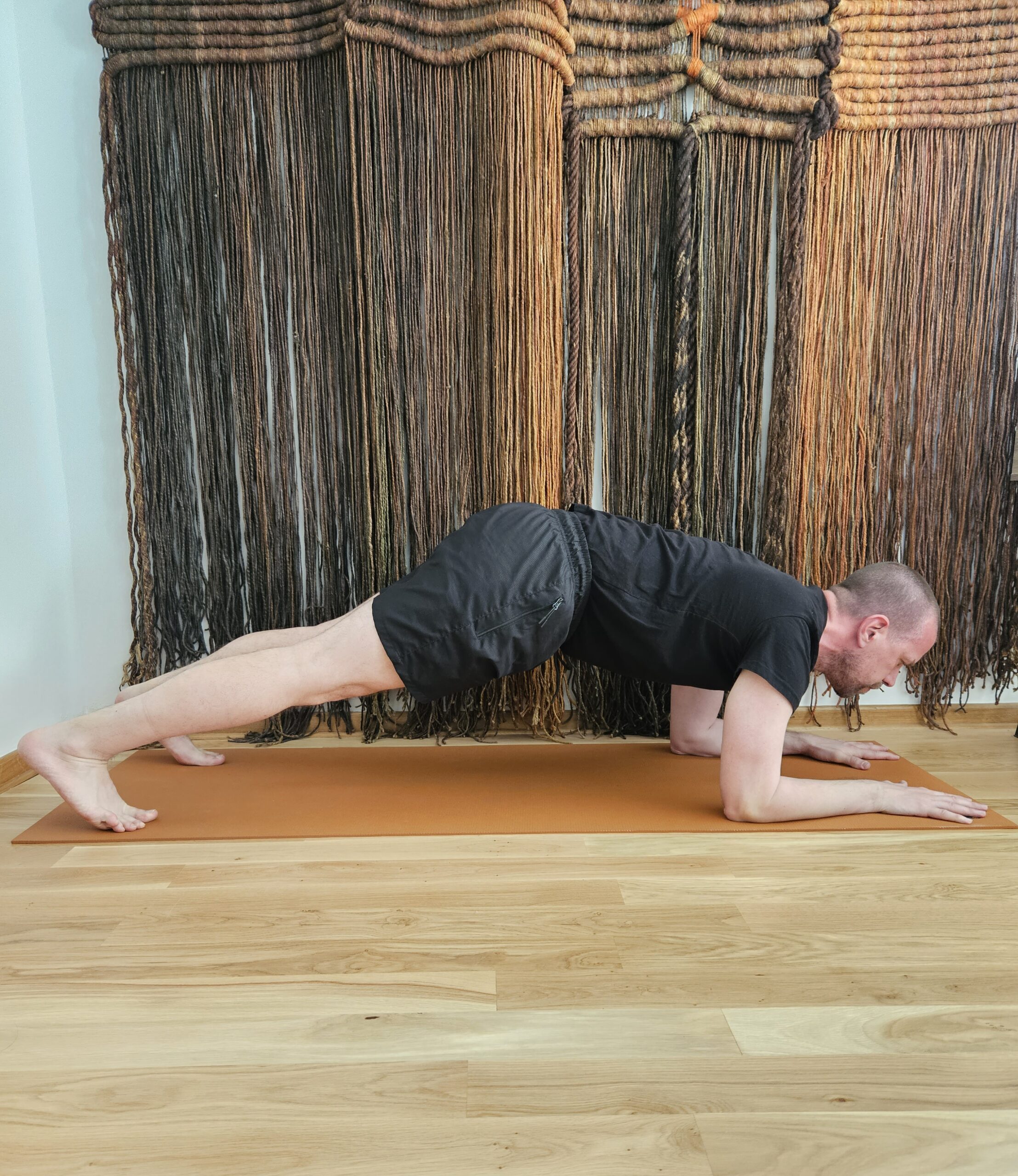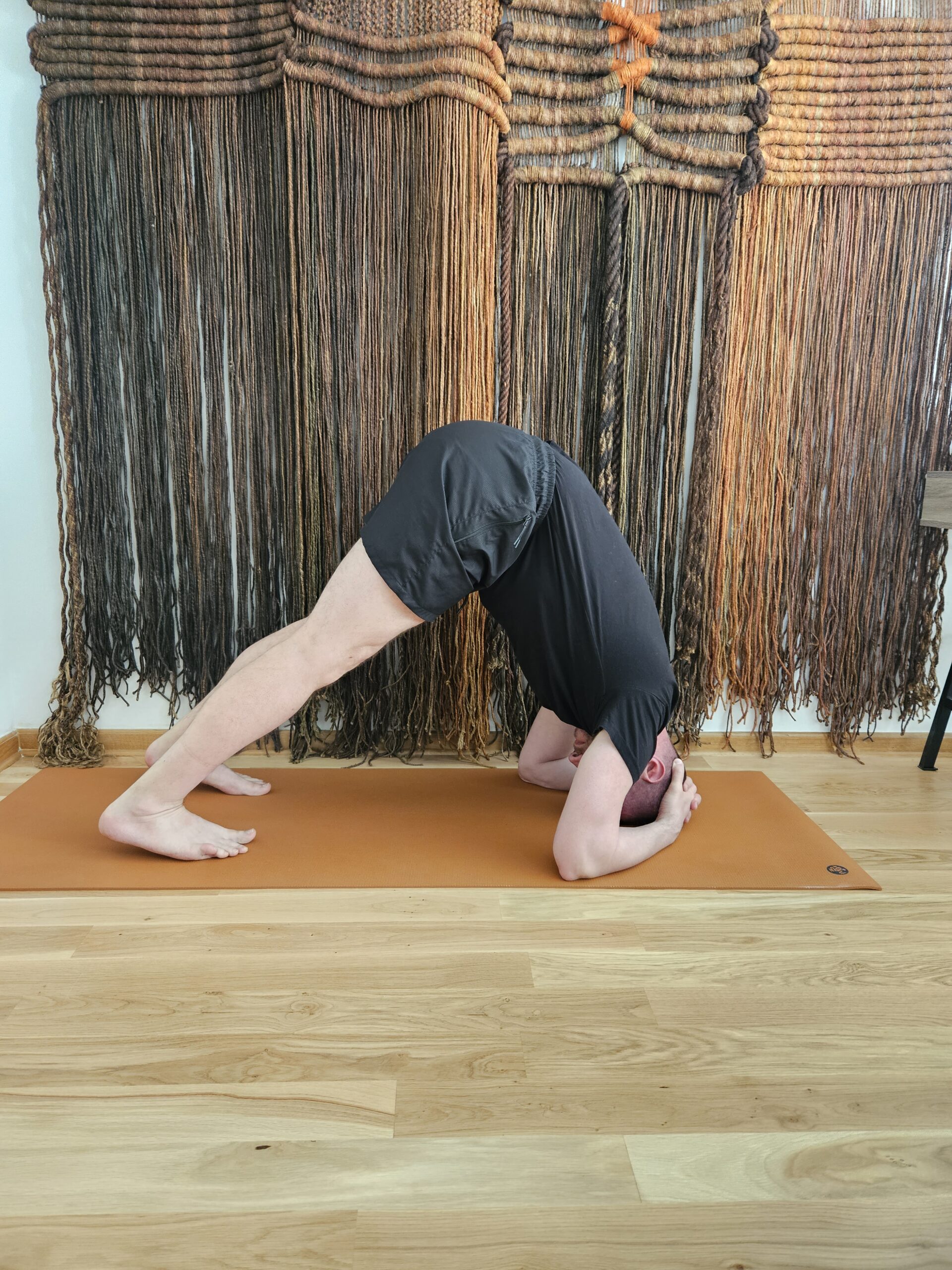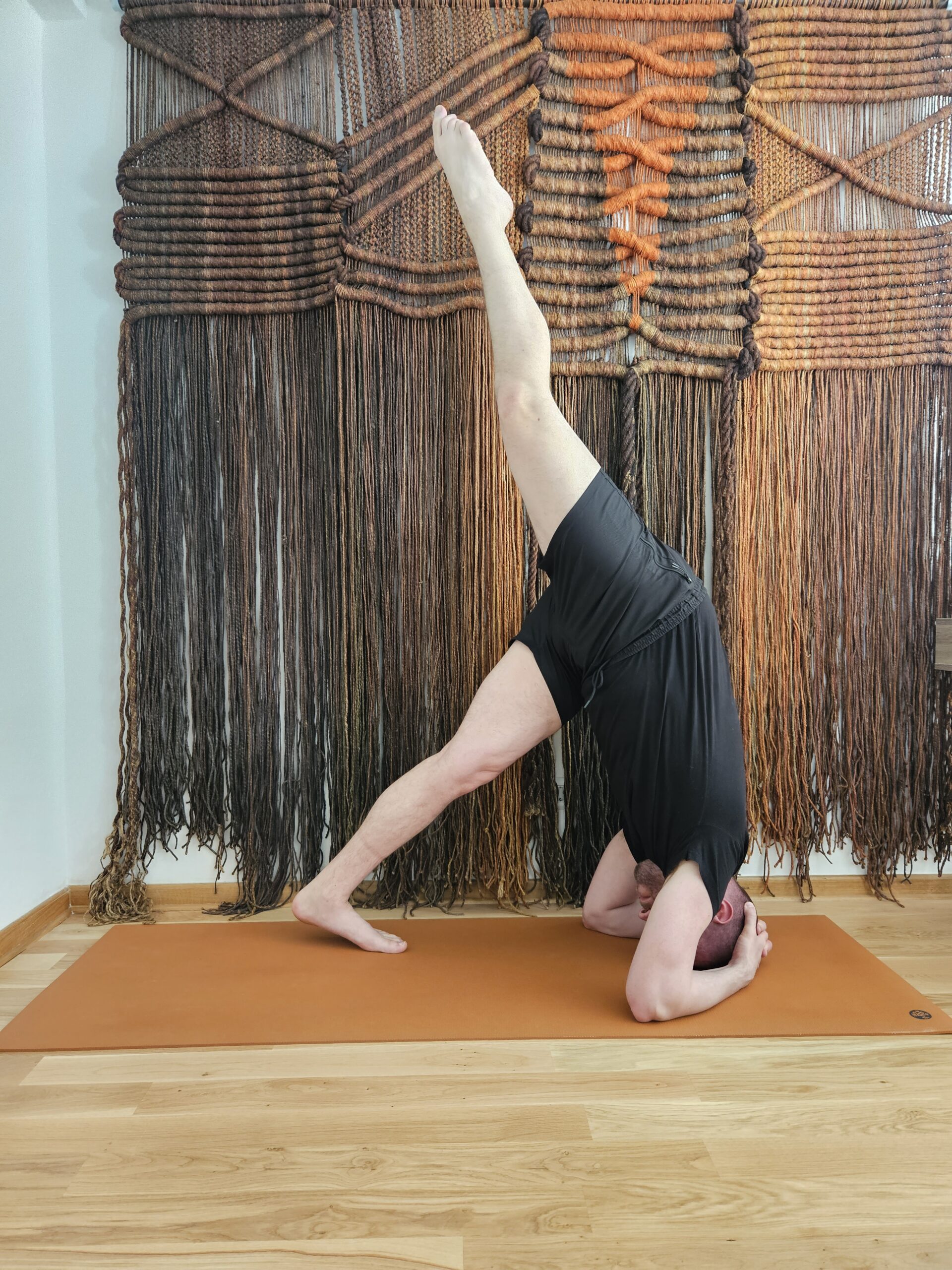The headstand is considered the king of yoga poses. One of the reasons is that by practicing this pose, your body realizes an extremely large number of benefits, both on a physical, mental, and spiritual level.
The name of this pose in Sanskrit is Sirsasana – sirsa means head and asana means pose.
A DEEPER INSIGHT
The headstand is one of the demanding inverted poses. A person who is practicing the headstand should have enough strength and a well-developed sense of balance to perform it. It is also an important condition that a person has no fear of falling, both on a physical and mental level.
In my many years of practice as a teacher, I met a considerable number of practitioners who had enough strength to perform headstands, but their main obstacle was their fear of falling. It is an obstacle that can certainly be overcome with certain preparatory poses; I will point out more about the same in the rest of this article.
By practicing this pose, you activate the following chakras: the crown chakra (Sahasrara), the so-called “third eye” (Ajna), and the throat chakra (Vishuddha).
The elements that are associated with this pose are light, thoughts, and ether.
Bearing in mind what elements are connected to the performance of this pose, it can easily be concluded that you can gain deeper inner insights with regular headstand practice. Your inner awareness will develop to a great extent through regular headstand practice.
PRACTICE
Before starting your headstand practice, you must develop core strength, stability, and a good sense of the alignment of your body in space.
The following poses will help you with the forearm stand, shoulder stand, downward-facing dog, and dolphin pose.

You can practice all the listed poses as static poses or you can stay in each of the listed poses for one minute or stay in each pose as long as your body allows.
Over time, as you get stronger, you can practice a small sequence that involves transitioning from forearm to dolphin and from dolphin to the downward-facing dog.
When you get into the pose of downward-facing dog, you move backwards. So, from the downward-facing dog, you move into a dolphin; and from dolphin, you move into the forearm stand.
Notice that you make a transition with exhalation. So, with exhalation, you enter from one pose to another. During this mini-sequence, you can also do victorious breathing (ujjayi). Through this type of breathing, you will get rid of toxins in your body faster through sweat.
Repeat this mini-sequence three times if you can. As you develop your strength and sense of stability over time, feel free to increase the number of repetitions. The maximum number of repetitions is ten.
In addition to these poses, which are very important to develop your strength and stability, I advise you to practice the intense leg stretch pose (Prasarita Padottanasana). I recommend this pose, especially to people who have a fear of falling. By practicing this pose, you will quite easily transfer the weight of your body to the top of your head (if you can perform this pose completely).
While in this pose, you transfer the weight of your body very lightly to the top of your head and to your palms, which are on the yoga mat.
When you decide to start your headstand practice after all these preparatory poses, it is very important to follow these steps:
Step 1:
You are on the yoga mat, your knees are resting on the yoga mat, and your back is straight in relation to the yoga mat. Your palms are shoulder width apart; your elbows are right below your shoulders. Spread your forearms out to the side so that your wrists are in line with your elbows. Interlace your fingers; your hands are on the yoga mat the whole time.
Step 2:
Rest your head on the yoga mat, positioning the back of your head between your interlaced fingers.
Step 3:
Lift your hips and fully stretch your legs. Keep the heels of your feet lifted while your toes stay on the yoga mat. Try to stay in the pose for ten inhales and exhales. If staying in the pose is challenging for you, feel free to come out of it before the end of the tenth exhalation. Do not force your body.

Step 4:
From this pose, you can try to lift your right leg all the way up to ninety degrees. If you succeed, try to stay in the pose for ten breaths. After your right leg, lift your left leg.
The advice for this step is the same as in the previous step: if staying in the pose is challenging, get out of it.

Step 5:
The last step involves raising both legs to ninety degrees.
If you are not yet able to lift your legs up at the same time, feel free to lift the first one and then the other.
Try to keep your legs fully stretched. If this is a challenge for you at the moment, you can try lifting them by first bending them at the knees. When they are bent like that, bring them slightly closer to your body and start to straighten them completely.
When you are in the full pose, your entire core is active, your legs are fully extended, and your gaze can be directed towards the tip of your nose.
While staying in the pose, it is important to activate the mula and uddiyana bandha.
If you can, stay in a headstand for ten breaths.
Exit the headstand by first bringing one leg back to the yoga mat, then the other. After that, lower your knees to the yoga mat, untangle your fingers, and enter the child’s pose (Balasana). Stay in the pose for about one minute.
BENEFITS
By practicing the headstand, you will strengthen your core, back, and legs. You will also develop strength in your shoulder area; your biceps and triceps will become more developed.
Your sense of movement in space and the flexibility of your legs will also improve.
Your lung capacity and your digestive system will improve.
If you have circulation problems, a headstand helps improve your circulation.
This pose is excellent to relieve stress and feelings of anxiety. Headstand gives you back the energy that you need.
Since headstand activates the fifth, sixth, and seventh chakras, the impact of this pose on your spiritual development is very important.
CONCLUSION
Headstand is a physically demanding pose, but the benefits that your body gets from it on all levels of its existence are priceless. Your body will thank you physically, mentally, and spiritually if you start practicing headstands.
Remember to start practicing this pose according to the current capabilities of your body. If you feel that your body is not fully ready for the full pose, start with the preparatory poses.
You can practice the preparatory poses as static poses (staying in each for one minute) or as a mini-sequence.
Do not forget to apply the bandhas, to incorporate ujjayi breathe and to direct your gaze towards the tip of the nose.
Namaste.







